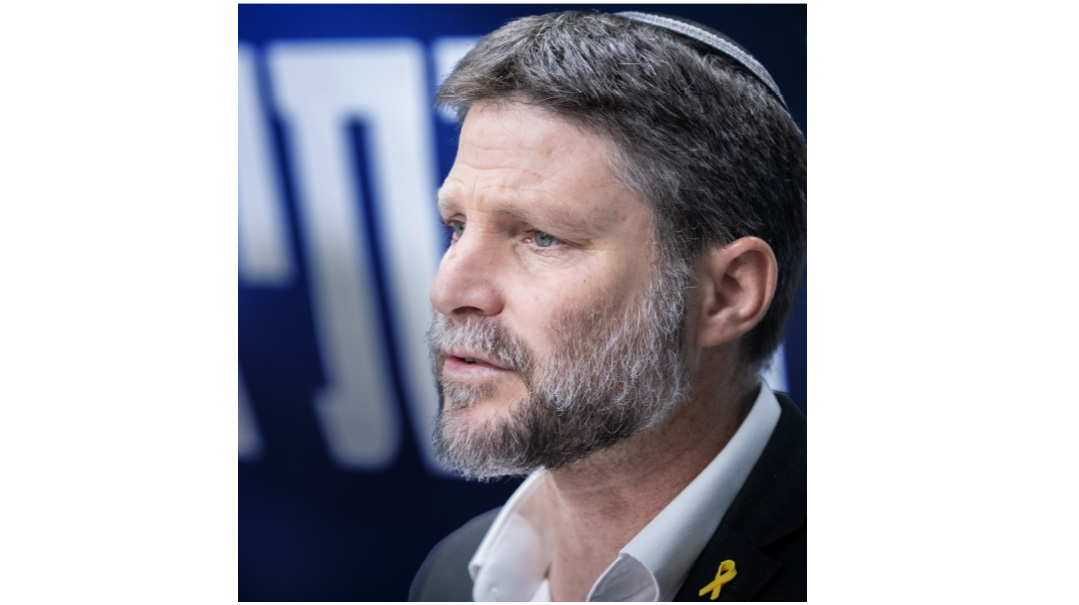Redemption from Adversity

Hashem’s intimate view of my challenges mirrors mine

G
eulah, the final Redemption, is one of the most frequently referenced themes in our liturgy. We daven for Geulah on a regular Wednesday, on exalted Yamim Tovim, and on days of mourning. Geulah is such a recurring theme in tefillah, we’d be forgiven for assuming the seventh brachah, “Re’eh (na) v’anyeinu… ki goel chazak Atah” is another impassioned appeal for deliverance. When the Gemara discusses the order of brachos in the Shemoneh Esreh, it addresses this precise question: “Why did they see fit to place Geulah [the brachah of Re’eh v’anyeinu] as the seventh brachah? Rava says, because they will be redeemed in the seventh [year]” (Megillah 17b).
The Gemara’s explanation seems reason enough to assume this brachah speaks of our ultimate Geulah. However, Rashi (ibid) points out that we have many other Geulah-themed brachos in Shemoneh Esreh that reference redemption more directly: “Es tzemach David avdecha” and “v’liYerushalayim ircha” speak of our yearning for Mashiach’s arrival and the return of Hashem’s Shechinah to Yerushalayim. Therefore, this brachah must be speaking of a different facet of redemption.
Redemption From Suffering
“Lav Geulah d’galus hi, ela sheyigaleinu min hatzaros haba’os aleinu tamid — this brachah doesn’t refer to redemption from exile, rather it’s a bid to be redeemed from the myriad afflictions we suffer daily” (ibid).
Life is riddled with adversity. Sometimes our challenges are modest-sized: Rush-hour traffic, car trouble, strep throat, unexpected expenses, weight gain. Other challenges are more formidable: Financial woes, child-raising hardships, shidduchim troubles, relationship issues.
And then there are the uncontested mega-challenges, the ones that leave us breathless with shock and pain: Losing a loved one, serious medical crises, children in turmoil, marital distress, addictions, infertility.
Whether it’s a big-box ordeal that redefines the contours of daily life, or a modest-sized challenge that intrudes on my otherwise tranquil existence, this is the brachah that embraces affliction. It’s the place to unburden myself, to entrust my pain to the only One who truly understands and can make it right.
Hashem’s intimate view of my challenges mirrors mine. He understands how they meddle in my daily affairs, and entangle my normal functioning with anxiety, sadness, and anger. Perhaps this explains the placement of this brachah.
See Our Pain
Birchos shevach are followed with brachos of bakashah. We begin our bakashos with an appeal for daas, so that we’ll be capable of understanding the imperative for tefillah, and will know what to request of Hashem. Then follow the brachos of teshuvah — repentance; this ensures that our sins, barriers to connecting with Hashem, are eliminated so our tefillos can ascend unhindered.
Once we’ve asked for the requisite daas and cleared the path for tefillah, the very first request we make is “Re’eh v’anyeinu — Hashem, see our suffering!” The Anshei Knesses Hagedolah didn’t order the brachos of our Shemoneh Esreh arbitrarily. Perhaps they grasped that before we dive deep into our specific wants and needs, we must first relieve ourselves of the acute distress that swallows our physical and emotional reserves, and dispatch the tears of our “anyeinu” directly to Hashem.
We begin the brachah with a curious phrase: Re’eh — see! Hashem is aware of all his creations at all times, why would we enjoin Him to see us?
Hashem has different levels of interaction with mankind. Sometimes He employs a state of “he’aras panim,” where it’s as if He inclines His face toward us. This is an auspicious expression of willingness to engage with us, and Hashem’s direct hashgachah is readily apparent when He’s in this state.
Sometimes He engages in an inverse approach, hester panim, where it’s as if He conceals His face. When Hashem engages us in this mode, His presence is so thickly veiled that events seem detached, more coincidental than Divinely scripted, and evil abounds in the spaces once illuminated with goodness.
In asking Hashem to “see” us, we allude to these states of hester and he’eras panim, imploring Him to open the “eyes” of His “panim” and perceive us in our misery.
Re’eh is also an expression of closeness and desirability. It would be counterproductive to ask Hashem to dispassionately watch us struggle through our misfortune like a detached bystander. Rather, we invite Him to lean in to our feelings of distress so He may be more inclined to act in our favor.
Even if We’re Undeserving
“Anyeinu” derives from the word for poverty. However, our intentions in this brachah reach far beyond a checking account. Anyeinu speaks for the parts of life where we feel lack, the places where we find ourselves impoverished and bare. Yes, this can refer to mounting expenses and debt, but it also articulates a poverty of spirit, a cry over the pain of lack that lurks in many corners of life.
“V’rivah riveinu — agitate for us in our struggles.” Here we ask Hashem to represent us in the battles we engage in with others. Sometimes we find ourselves a veritable Dovid pitted against a Goliath of a problem. It could be a mammoth institution like the IRS, a communal board at our schools or shuls, or a situation of discord at work, on an online forum, in a neighborhood development, or between friends. No one wants to find themselves embroiled in conflict, but when we do, there is no better representative to reconcile our disputes than Hashem. He is the only one we can rely on to maintain our best interests while preserving our integrity.
“Ki goel chazak Atah — for You are a mighty redeemer.” The word “chazak” echoes the language of Yetzias Mitzrayim, when we spoke of Hashem’s “Yad chazakah” in executing the Geulah. Here too we ask for deliverance through the medium of “chazak,” an allusion to overcoming the system of teva — nature — that prevailed.
In Mitzrayim, Bnei Yisrael had sunk to the lowest level, and their redemption was in some ways undeserved. “Halalu ovdei avodah zarah v’halalu ovdei avodah zarah” — if both the Egyptians and the Jews were idol worshipers, what garnered us the merit to be redeemed? Hashem employed the trait of “chazak”; He overrode Bnei Yisrael’s lack of merit and nonetheless delivered them to freedom. So too, we ask that despite our dearth of mitzvos, Hashem nonetheless perceive our pain, represent us to our adversaries, and redeem us from our suffering.
This brachah, like all brachos of Shemoneh Esreh, ends in the present tense: “Baruch Atah Hashem, goel Yisrael — Blessed are You Hashem, Who is the Redeemer of Yisrael.” However, it can also be read as “Blessed… Who is redeeming Yisrael.”
Reading the closing of the brachah this second way is incredibly heartening. Hashem is preparing my personal redemption from suffering right now as I speak with Him. And even once I close my siddur for the day, He continues coaxing the wheels of my personal geulah ever closer to a positive outcome. “Ki goel chazak, Atah.”
Mrs. Elana Moskowitz has been teaching in seminaries for over 20 years.
(Originally featured in Family First, Issue 829)
Oops! We could not locate your form.




